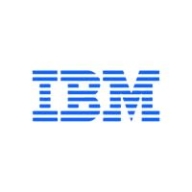

IBM Case Foundation and IBM BPM compete in the process and case management solutions category. IBM BPM often has the upper hand with its comprehensive feature set, while IBM Case Foundation appeals to those prioritizing cost and support.
Features: IBM Case Foundation focuses on complex case management scenarios, providing valuable features such as document storage, workflow automation, and analytics capabilities. IBM BPM is characterized by robust business process management functionalities, including automation, adaptability, and advanced integration features that aid in creating dynamic business process models.
Room for Improvement: IBM Case Foundation could benefit from enhancing its integration capabilities and expanding its feature set beyond just document handling to include advanced collaborative tools. It can also improve its analytics tools for better real-time data processing. For IBM BPM, improving user interface customization and reducing complexity in system configurations would provide significant value. Additional enhancements in the area of better training resources and documentation would facilitate easier onboarding and usage.
Ease of Deployment and Customer Service: IBM BPM supports modular deployment, which is advantageous for scalable operations and offers responsive customer service. On the other hand, IBM Case Foundation offers a simple integration process with existing systems, ensuring effective deployment with strong customer support. Although IBM BPM is more flexible, IBM Case Foundation's setup process is straightforward, strongly supported by extensive customer infrastructure.
Pricing and ROI: IBM Case Foundation provides a cost-effective solution, appealing to organizations that emphasize support and a lower initial expenditure, which aids in optimizing case processes with favorable returns. IBM BPM, despite its higher initial cost, delivers considerable ROI thanks to its efficiency and scalability, making it a preferred choice for businesses requiring extensive process management.
| Product | Market Share (%) |
|---|---|
| IBM BPM | 5.3% |
| IBM Case Foundation | 0.5% |
| Other | 94.2% |


| Company Size | Count |
|---|---|
| Small Business | 30 |
| Midsize Enterprise | 19 |
| Large Enterprise | 71 |
| Company Size | Count |
|---|---|
| Small Business | 5 |
| Midsize Enterprise | 5 |
| Large Enterprise | 6 |
IBM BPM is a business process management tool that provides a robust set of tools to author, test, and deploy business processes, as well as full visibility and insight to managing those business processes. The solution provides tooling and run time for process design, execution, monitoring, and optimization, along with basic system integration support. To support various levels of complexity and involvement with business process management, there are two different editions of the product: IBM BPM and IBM BPM Express.
IBM BPM Features
IBM BPM has many valuable key features. Some of the most useful ones include:
IBM BPM Benefits
There are many benefits to implementing IBM BPM. Some of the biggest advantages the solution offers include:
Reviews from Real Users
IBM BPM is a solution that stands out when compared to many of its competitors. Some of its major advantages are that it’s good for developing complex apps, is robust, and has helpful team management and process performance features.
Zoran C., Owner/CEO at IT SPHERE, says, “It is perfect if you have to develop complex apps without much coding (only java script). It is also good if you don't have much IT resources in your company and would like to involve business analysts in the process of developing apps. My opinion is that it can do about 50% of all developers' work.”
Suhas V., BPM Architect at GBM, mentions, “Overall the solution is robust and has the ability to integrate with any product for complex workflows."
A BPM Consultant at a financial services firm comments, "Some of the features that I like the most are team management and process performance. They are both very useful and very powerful with regard to the workflow."
A Digital Banking & Innovation Director at a financial services firm expresses, “The processing functionality makes it easy to change processes and workflows easily.”
We monitor all Business Process Management (BPM) reviews to prevent fraudulent reviews and keep review quality high. We do not post reviews by company employees or direct competitors. We validate each review for authenticity via cross-reference with LinkedIn, and personal follow-up with the reviewer when necessary.